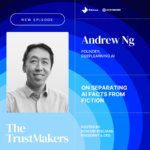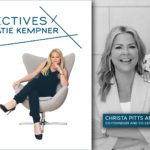By Ben Bush, Partner and Head of Strategy at The Frameworks
When was the last time you realised someone had lied to you?
It’s a horrible feeling, that dawning realisation that someone you rewarded with your trust felt able to betray it. They may have felt they had good reason, but it’s hard to recover from the erosion of trust that a lie will bring.
Sadly, we live in a world where lies are increasingly a way of life. Certainly there’s a host of politicians and commentators who feel they can say basically whatever they want without any repercussions.
Just because standards are falling in other walks of life, though, that’s no excuse for marketing to follow suit. Ironically, in an industry defined by invention, we need to stay on the right side of truth and not let creative storytelling stray across the line into out-and-out lying. Not just because we’re a professional business service, but because building and maintaining trust is so fundamental to what we do.
Strong marketing is built on clarity and authenticity, and there’s a big opportunity for an industry known for spin to step up and show the way in a post-truth world.
Is it spin or just a lie?
It’s clear why marketers might be tempted to lie. Most people think we’re all liars anyway. Spare a thought for estate agents, the most maligned of marketers, who have been so tainted with this image that they’ve basically become caricatures of themselves.
And maybe marketers shouldn’t be so hard on ourselves when we are tempted to bend the truth. We’re only human, and research suggests the average person lies once or twice every day.
So it’s little wonder that marketers might be tempted to be a bit too creative with the truth. When we go too far, though, we risk losing our audience’s trust. Dishonesty can be incredibly damaging. Pepsi’s viral advert, here on Marketing Dive if you missed it, featuring Kendall Jenner in 2017 resulted in a decade low for their consumer perception levels. More subtly, Burger King’s decision to use a sexist trope as clickbait for their 2021 International Women’s Day Women belong in the kitchen campaign you can see here on Forbes did nothing good for their reputation.
In the B2B world examples of such dishonesty and poor judgment are rarer. Maybe it’s because it’s not – traditionally – the home of bold creative thinking. Or maybe it’s just that the outcry that follows tends to be far less public. But that’s not to say people don’t get it wrong. Take Quantum Tech’s newsjacking horror, that you can read about here on Business 2 Community, following the terrorist attack on the World Trade Center. Or the “Crying CEO” here on the New York Post, demonstrating that being (apparently) authentic doesn’t always equate to using good taste and judgment.
So is lying always bad? Not necessarily. IBM’s Every Second Counts campaign, here on the Shorty Awards site, is a great example. A made-up scenario “inspired by true events” is delivered with enough authenticity and style that the audience is more than happy to suspend disbelief and play along. Elsewhere, Malaria No More’s “Malaria must die” video here on Campaign Live went one better not just by roping in David Beckham but by embracing the ultimate modern weapon of deception, the deepfake. Dove is another brand who has exploited this technique in a compelling illustration here on The Drum of just how insidious our post-truth era can be.
It’s not immediately obvious where deepfakes will find a home in B2B marketing – maybe they’re already here and we haven’t noticed. But whatever bold ideas we dream up, we should look to the B2C space for the good, the bad and the ugly.
Beyond creativity
Betraying your audience’s trust is not just about using dishonest creative, though. The amount of technology we use in modern B2B marketing presents additional opportunities to indulge in unethical practices that can irreparably damage a brand. Spamming your audience or betraying the sanctity of their data are two obvious examples. And the rapid evolution of AI and machine learning is presenting its own ethical challenges for businesses, you can read about here on UST.
There is a need for integrity in a profession increasingly driven by data, automation and AI. Regulations are being put in place to protect people from nefarious marketing tactics like spamming, but advertising campaigns are more difficult to police. The Advertising Standards Authority only sees campaigns once they are live so it often falls to marketers themselves to set their own standards.
Laying the foundations for trust
Creative authenticity is what we should all be aiming for. That means not making false claims, not covering up negativity and communicating with clarity. How best to balance creativity with clarity and honesty? Here are three key tips all marketers should consider.
First, operate a strategy-first approach to problem solving and creative briefs. Our own model at The Frameworks forces us to look deep into every challenge or opportunity. We don’t just take a brief at face value without digging into deeper context and audience expectations, insights and empathy. This safeguards us against the temptation to charge in and do something silly.
Second, follow best practices. If you have a campaign idea that doesn’t seem quite right, check and check again. Think about the audience, what their understanding of the subject matter is and what you’re asking of them. Often, it comes down to providing foundational education rather than being tempted to make a truth-stretching claim about the benefit of using a product.
Third, hold yourself to high standards and don’t be pushed into dodgy practices. We all come under pressure from clients, managers or last-minute curveballs. But there’s always an alternative to sharp practices. No one wants to go viral for the wrong reasons.
These aren’t revolutionary ideas but solid foundations that still leave room for creativity. Bold thinking can unlock endless possibilities in the B2B space.
Perhaps the traditional hesitancy for B2B marketers to be creative has largely insulated us from the pitfalls of straying into unethical, dishonest and trust-eroding territory. And perhaps that’s not such a bad thing. But let’s not make authenticity the enemy of creativity.











